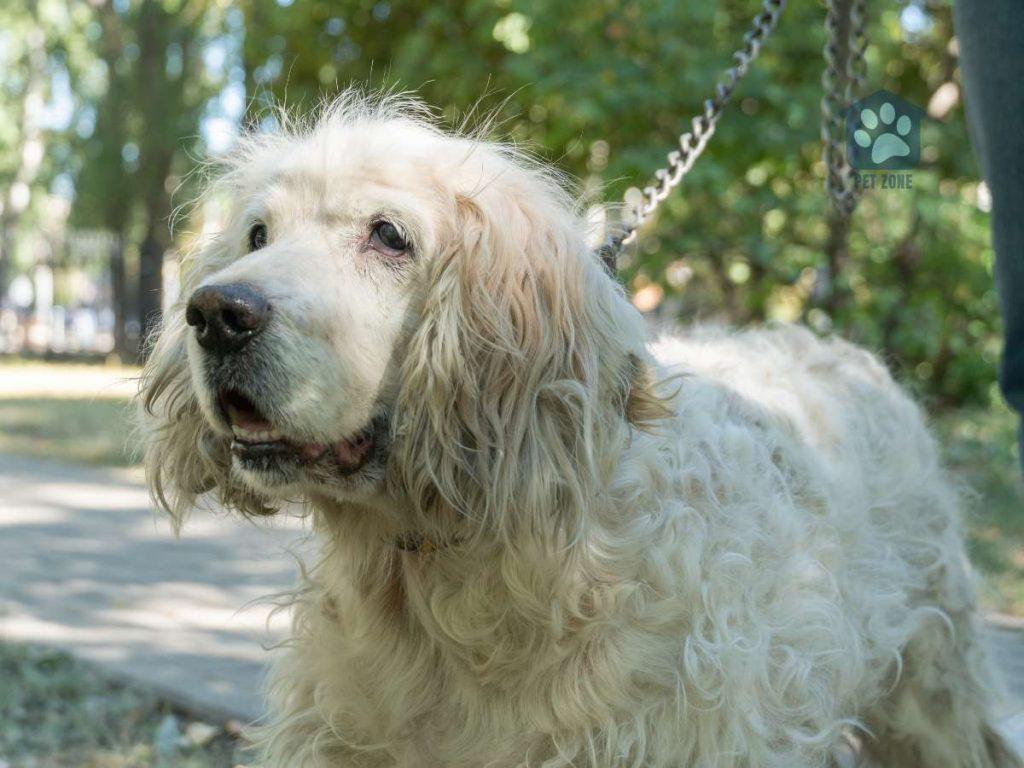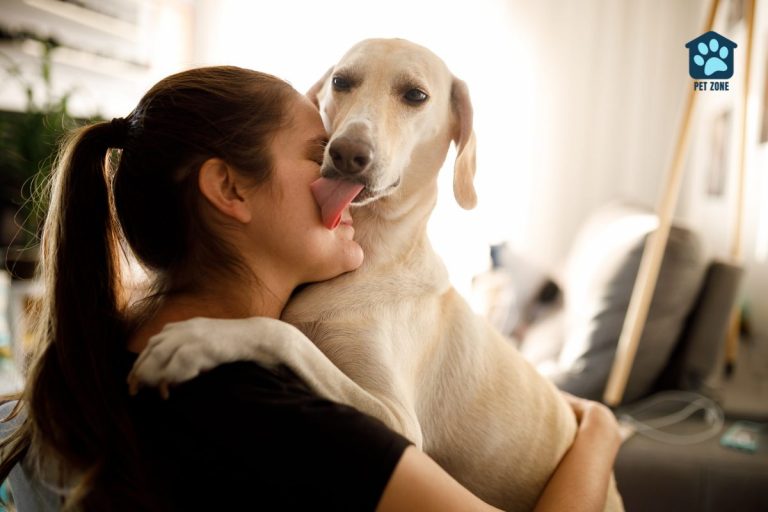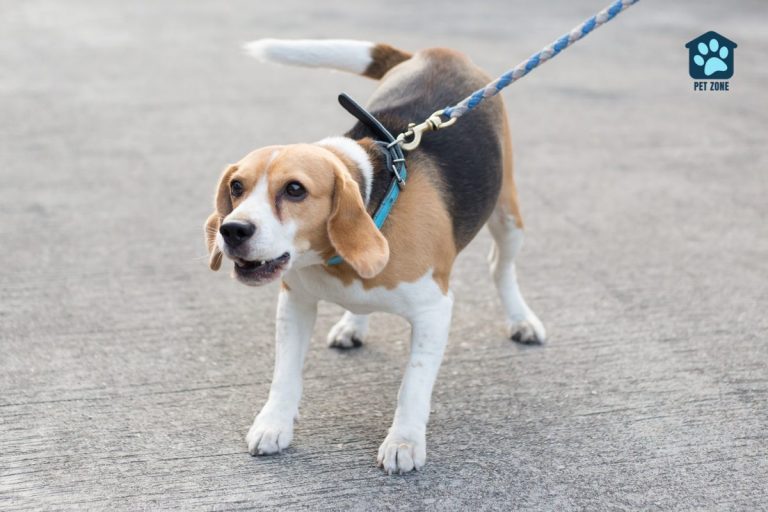Estimated reading time: 6 minutes
You’re out for a walk with your dog, enjoying the fresh air and tranquility, when suddenly, he starts moving in the opposite direction – walking backwards. Is it playful antics, or is it a cause for concern?
In this article, we will explore the various reasons behind dogs walking backwards, giving you a clearer understanding of why your dog may be doing the moon walk.
Key Talking Points
- Is it normal for dogs to walk backwards? If it happens occasionally, it’s nothing to worry about. Regular or persistent backward walking can indicate potential issues.
- Possible reasons for a dog walking backwards? This can be due to neurological disorders, physical discomfort, cognitive decline in older dogs, or behavioral triggers like fear or anxiety.
- Signs of neurological disorders in dogs? Symptoms can include whimpering, difficulty standing or walking, behavioral changes, front leg weakness, and walking in circles.
- What should I do if my dog starts walking backwards suddenly? Closely observe your dog and consult with a veterinarian if the behavior continues.
Is it normal when dogs walk backwards?
While walking backward can be a part of normal behavior, it’s crucial to understand that continuous or frequent backward walking isn’t typical in dogs and could indicate an issue. Let’s look at some possible reasons why your dog might be moving backward.
What are the possible reasons for a dog to walk backwards?
Behavioral Reasons
Dogs communicate their feelings and perceptions through their actions, and moving backward can sometimes be their way of expressing discomfort or anxiety.
Fear or Anxiety
Fear is a potent motivator for dogs, and they can exhibit unusual behaviors, such as walking backwards, when they feel threatened or anxious. This is especially true for dogs that are naturally more anxious or those that have had traumatic experiences in the past.
For instance, if your dog is scared of a particular area in your home because of loud noises — like the roar of a vacuum cleaner or a noisy dishwasher — they might walk backward to avoid crossing that area.
Similarly, dogs that are uncomfortable around certain people or other animals might display the same behavior.
Communication
Sometimes, dogs might walk backward to communicate specific needs or wants. For example, if they want to play or want you to follow them, they might walk backward while facing you. Observing their overall body language can help you understand what they are trying to communicate.
Mimicking Behavior
Dogs are social creatures and often learn behaviors from their peers or even from their human companions. If they have seen another dog or a human moving backward, they might mimic this behavior out of curiosity or playfulness.
Arthritis or Hip Dysplasia
Just like in humans, arthritis or hip dysplasia in dogs can cause pain and discomfort, making your dog walk differently. Dogs suffering from arthritis may walk backward to alleviate the pain, especially if it affects their front leg.
Hip dysplasia, typically seen in older dogs, may affect their hind legs, causing odd walking behavior, including walking backwards.
Older Dogs
As dogs age, they are susceptible to numerous health conditions, some of which can cause them to walk backwards. Cognitive decline and vision loss are two such conditions commonly seen in older dogs.
Cognitive decline, also known as Canine Cognitive Dysfunction Syndrome (CCD), is often compared to Alzheimer’s in humans. It affects a dog’s memory, learning, perception, and awareness. Senior dogs with CCD can exhibit confusion and disorientation, leading to various behavior changes, including walking backwards.
Vision loss or impairment is another common issue in older dogs, which can be due to various factors, such as cataracts or general age-related decline.
Dogs with poor vision may walk backwards to better sense their environment, especially in familiar spaces. They may use their hind body and tail to feel for objects behind them, a tactic which, while unusual, allows them to navigate safely.

Neurological Disorders
If your dog is walking backwards, it may be due to a neurological disorder. Changes in your dog’s behavior, such as whimpering, difficulty standing or walking, front leg weakness, or walking in circles, could signal a neurological problem.
What are the signs that my dog may have a neurological disorder?
Neurological disorders can impact a dog’s way of life and are often indicated by certain behaviors. It’s important to keep an eye out for the following signs:
- Whimpering or other signs of discomfort
- Difficulty standing or walking
- Changes in your dog’s behavior such as increased aggression or decreased activity
- Weakness in the front legs or a peculiar gait
- Walking in circles or other strange walking behaviors
These signs could indicate that your dog may be suffering from a neurological disorder and should be promptly assessed by a veterinarian.
What should I do if my dog begins to walk backward suddenly?
If you’ve noticed that your dog has started walking backwards out of the blue, it’s crucial not to panic. Instead, follow these steps:
Observe Your Dog’s Behavior
Take a few steps back and observe your dog’s backward walking closely. Does he seem deliberate or confused? Is your dog showing signs of discomfort or whimpering? Does his tail tuck between their legs, a clear sign of fear?
Take Your Dog to the Vet
If your dog continues to walk backward, it’s time to get professional advice. Your vet can diagnose any potential physical conditions like loose patella, hip dysplasia, or arthritis, and rule out any neurological issues. They can also guide you to make your dog feel more comfortable and walk normally.
Get Your Dog Some Professional Training
If the vet rules out any health issues, your dog walking backward could be a behavioral issue. In this case, professional training can help your dog overcome this habit.
Conclusion
While it may seem strange, dogs walking backward can be a result of several factors, from neurological disorders and physical discomfort to cognitive decline in senior dogs, and various behavioral triggers.
It’s crucial as dog owners to be observant of our canine companions’ behaviors and actions, as they can often be their way of communicating underlying issues. If your dog frequently walks backward and it’s coupled with other signs of distress, it’s best to consult with a veterinarian to rule out any potential health concerns.
Please Comment and Share
We hope you found this article helpful! If you have any thoughts or experiences you’d like to share, please feel free to leave a comment below. We love hearing from our readers.
And if you think this article could help other dog lovers, don’t hesitate to share it on your social media platforms. Your shares help us reach more interested pet people. Thanks for your support!








